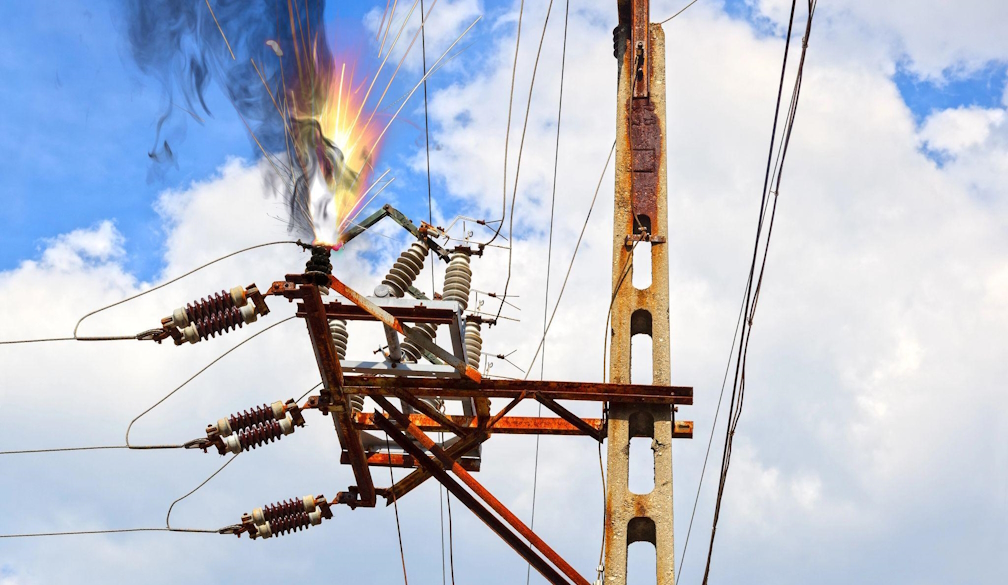A Comprehensive Guide to Safeguarding Your Home from Electrical Surges

Electrical surges are a common yet frequently overlooked hazard that can significantly impact homeowners. These surges, often termed power surges, can wreak havoc on your home's electrical system, leading to damaged appliances, increased fire risk, and costly repairs. In this guide, the focus will be on understanding electrical surges, why electrical surges are a key cause of outages, the risks they present, various protection devices, and practical steps to safeguard your home. Ignoring surge protection can result in severe consequences, making it imperative to implement effective strategies.
Understanding Electrical Surges
An electrical surge is a sudden and unexpected increase in voltage within an electrical circuit. Surges can be caused by a wide range of factors, including lightning strikes, power grid switching, faulty wiring, and the operation of high-power appliances like air conditioners and refrigerators. When an electrical surge occurs, the voltage exceeds the norm, potentially damaging electronic devices that are connected to the circuit.
Electrical surges can be insidious. For example, a large-scale surge can fry the internal components of computers, televisions, and other sensitive equipment. Smaller, repeated surges may gradually degrade the performance and lifespan of these devices. A concrete example is the 2013 Sydney blackout, where a severe electrical surge caused by a lightning strike resulted in widespread power outages and extensive appliance damage in numerous homes. Clearly, electrical surges pose a significant threat to home safety and functionality.
The Risks of Electrical Surges in Your Home
Electrical surges play a distinct role in causing electrical fires. When an electrical surge occurs, the excessive voltage can overheat wiring, leading to sparks that ignite surrounding materials. Surges can also damage appliances, with the intensity of damage ranging from minor malfunctions to complete system failures. The cost of repairing or replacing surged-damaged devices can be substantial, often amounting to thousands of dollars.
Beyond immediate damage, electrical surges pose hidden, long-term risks. Over time, consistent exposure to surges can degrade an appliance's internal circuitry, reducing its efficiency and shortening its operational life. The cumulative cost of such degradation can be quite high in the long run, emphasising the need for proper surge protection.
Exploring Different Types of Surge Protection Devices
Various surge protection devices can help shield your home from the damaging effects of electrical surges. These include whole-house surge protectors, power strips with built-in surge protection, and uninterruptible power supplies (UPS).
Whole-house surge protectors are installed at the main electrical panel and provide comprehensive protection by blocking surges before they can enter your home's wiring. Power strips with built-in surge protection are ideal for protecting individual devices and are particularly useful for sensitive electronics like computers and home theatre systems. Uninterruptible power supplies not only offer surge protection but also supply backup power during outages, ensuring that your devices remain operational even when the power goes out.
Each surge protection device has its pros and cons. Whole-house protectors offer extensive coverage but can be expensive and require professional installation. Surge-protection power strips are more affordable and easy to use but only protect the devices plugged into them. UPS units provide the dual benefits of surge protection and power backup but can be costly and have limited battery life.
Recommendations for household needs may vary. A family with multiple high-value electronics might benefit from a combination of whole-house protection and surge-protection power strips, while a home office could benefit greatly from a UPS.
Steps to Implementing Surge Protection in Your Home
Implementing surge protection in your home involves a series of practical steps. Start by installing a whole-house surge protector at the main electrical panel. While this may require an electrician, it offers the best initial line of defense. Next, use surge-protection power strips for individual devices, ensuring that all essential electronics are safeguarded.
There are also several ways to reduce the likelihood of electrical surges. Regularly inspect and maintain your home's wiring, as faulty or outdated wiring can be more susceptible to surges. Unplugging devices during storms and when they are not in use can also mitigate potential damage.
Routine maintenance of your home’s electrical system is crucial. Schedule regular inspections with a professional electrician to identify and rectify any issues. If experiencing frequent surges, an electrician can troubleshoot the cause and recommend appropriate protection measures.
Knowing when to consult a professional is also key. If you're unsure about installing surge protection devices or if you've experienced significant electrical surges, it's best to seek professional advice to ensure your home remains protected.
The Role of Insurance in Protecting against Surge Damage
Home insurance can mitigate financial losses caused by electrical surges. Most policies cover damage to appliances and wiring resulting from electrical surges, but it’s essential to verify this with your insurer. It's wise to thoroughly review your policy details to ensure that electrical surge damage is included.
If your home does sustain surge damage, promptly report the incident to your insurance provider and document the damage by taking photographs and retaining receipts for repairs or replacements. These steps will streamline the claims process and improve the likelihood of reimbursement.
To ensure future damages are covered, consider updating your insurance policy to include broader coverage for electrical surges. Additionally, implementing effective surge protection measures will not only reduce the risk of damage but may also lower your insurance premiums.
Conclusion
Safeguarding your home from electrical surges is crucial for protecting your family, appliances, and property. This comprehensive guide highlights the importance of understanding electrical surges, the associated risks, and effective strategies to mitigate their impact. By implementing suitable surge protection devices, maintaining your electrical system, and securing appropriate insurance coverage, you can significantly reduce electrical surges' risk and associated costs.
Taking proactive measures to protect your home from electrical surges is a wise investment in safety and peace of mind. Don’t wait until a surge occurs — start safeguarding your home today.





